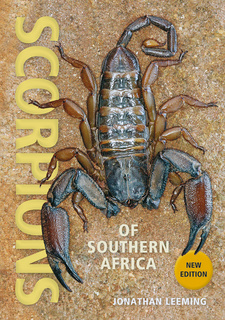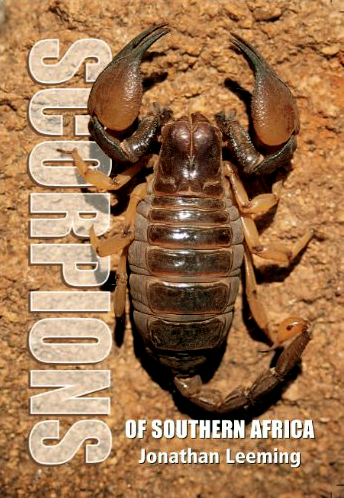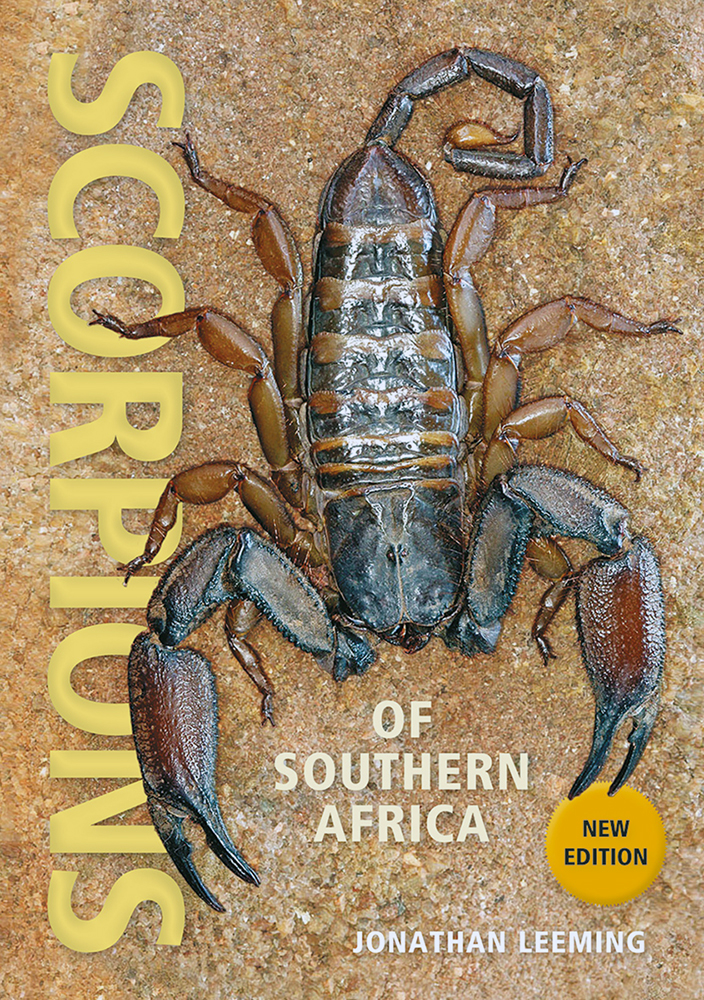Scorpions of Southern Africa, by Jonathan Leeming

Scorpions of Southern Africa, by Jonathan Leeming. Penguin Random House South Africa, 2nd edition. Cape Town, South Africa 2019. ISBN 9781775846529 / ISBN 978-1-77584-652-9
This new 2019 edition of Scorpions of Southern Africa by Jonathan Leeming includes twelve additional species, new images and distribution maps, and a chapter on how to go about identifying scorpions of Southern Africa.
Although Africa is one of the best places on earth to study scorpions, little information on these much misunderstood and often persecuted creatures is available to the public. This book presents what I hope is an intriguing insight into the behaviour and ecology of southern African scorpions. It will help amateur naturalists as well as professionals in associated fields to identify our rich scorpion fauna and, I hope, will promote a better understanding and tolerance of scorpions. On the whole, scorpions have a bad reputation. They are regarded as deadly venomous animals to be killed on sight, and it is forgotten that intricate life cycles, complex behavioural patterns and amazing adaptations to the environment lie beyond their apparent venomosity. This book aims to dispel myths about scorpions and replace them with facts about these fascinating creatures. It shows how to distinguish the more venomous from mildly venomous species. It describes how perfectly scorpions are adapted to their habitats and how the different parts of their anatomy are tailored to perform different functions. Distribution maps are provided for all the species described in the species accounts in this book. They have been produced using museum and private collection records. These distributions are often biased towards well-collected areas such as the Kruger National Park in South Africa and desert regions in Namibia. Other areas such as Mozambique are under-sampled. The distribution maps in the book are intended as guides, not as absolutes. The study of scorpions involves some very long words. I have tried to avoid complicated terminology, but this is not always possible. Meanwhile, the majority of family and genus names do not have common name equivalents and the different species must be identified using scientific names only. At the back of this book is a glossary that explains less familiar terms. The classification of southern African scorpions is undergoing vigorous revision and contains more than a few grey areas of taxonomy. I have deliberately omitted species whose classification is unclear. The species included are those most likely to be encountered. In many cases, they have very wide distributions and are easily identified with the naked eye. Habitat is also a reliable guide when differentiating species in the wild. I have given practical information in the species accounts about where to look for scorpions. Go out and take a look at the many small creatures around you. I have no doubt that after reading this book you will develop a new respect for scorpions and will view them from a fresh perspective.
This is an excerpt from Scorpions of Southern Africa, by Jonathan Leeming.
Title: Scorpions of Southern Africa
Author: Jonathan Leeming
Publisher: Penguin Random House South Africa
2nd edition. Cape Town, South Africa 2019
ISBN 9781775846529 / ISBN 978-1-77584-652-9
Softcover, 15 x 21 cm, 96 pages, numerous colour photos and illustrations
Leeming, Jonathan im Namibiana-Buchangebot
Scorpions of Southern Africa
The species included here are those most likely to be encountered among the Scorpions of Southern Africa.
Scorpions of Southern Africa
This edition of Scorpions of Southern Africa has been freshly designed, updated and expanded.


